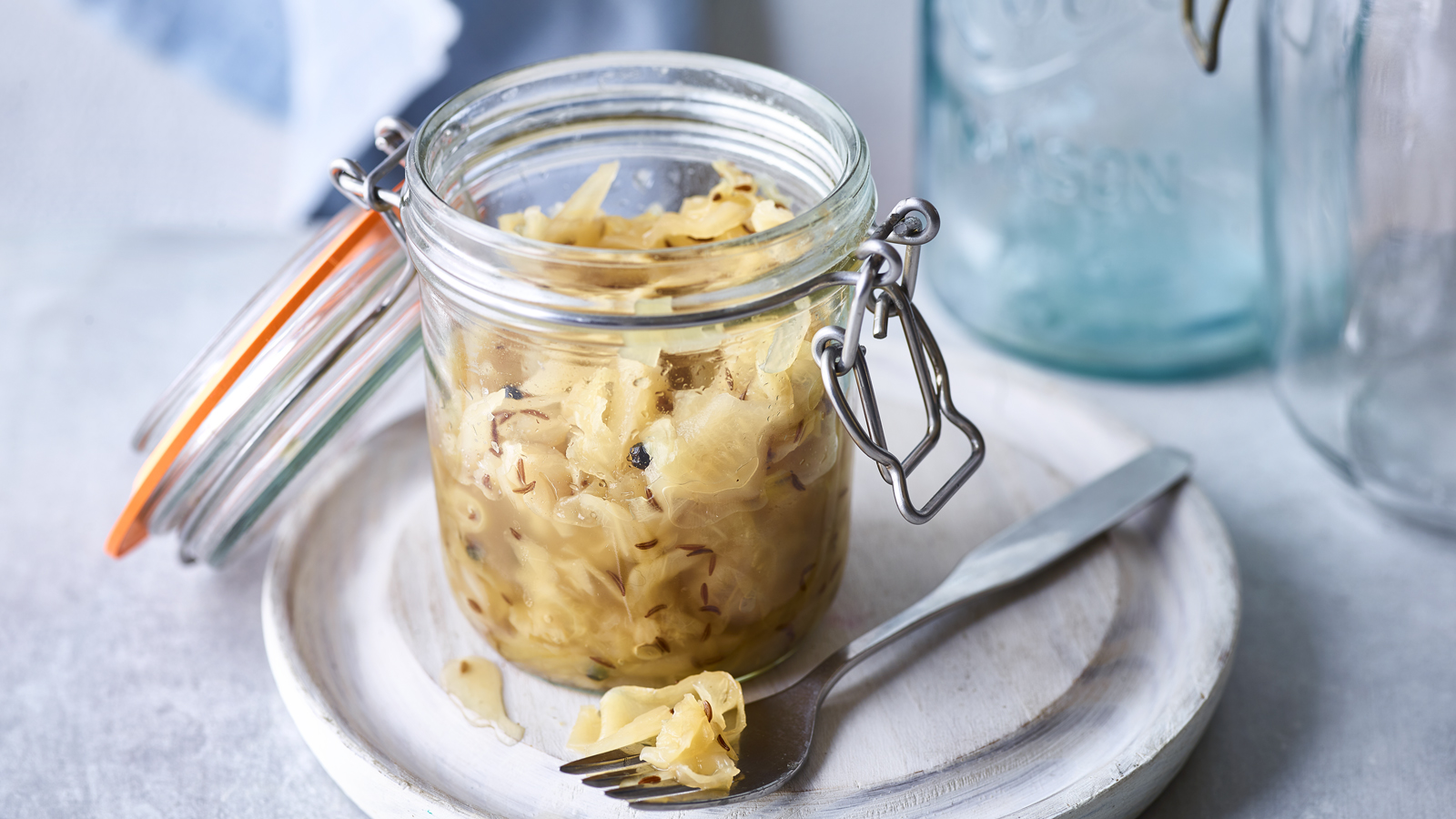Sauerkraut
4.2
(9)
Your folders
Your folders
Prep Time: 12 hours
Servings: 300.5
Author : Justine Pattison

Ingredients
Export 2 ingredients for grocery delivery
Instructions
Step 1
First prepare the equipment. Wash everything thoroughly in hot soapy water, paying particular attention to the rubber seal on the jar lid. Rinse everything under very hot water and leave to air dry.
Step 2
Put the cabbage in the clean mixing bowl and add the flaked salt. Massage the salt into the cabbage with clean hands for 8–10 minutes, or until the cabbage is limp and watery. There should be a pool of liquid left in the bowl. Reserve this to cover the cabbage in the jar. If your cabbage isn’t particularly fresh, you may need to add a splash of cold filtered water to help create a brine.
Step 3
Toss the cabbage with the black peppercorns and caraway seeds (if using). Transfer the cabbage and the reserved liquid to the prepared jar, leaving a large gap at the top, and press down well with the prepared small ladle or spoon.
Step 4
Place a ramekin or clean jar on top of the cabbage and fill with filtered water or baking beans to weigh it down and keep the cabbage just under the liquid. Cover with the lid and fasten tightly.
Step 5
Leave the cabbage to ferment in a cool place (not the fridge), out of direct sunlight, for 4–7 days. The sourness comes from the lactic acid produced during the fermentation process. If the sauerkraut is fermented at too high a temperature it can inhibit the process. Loosen, then tighten, the lid briefly each day to allow any gas to escape that has collected as the result of the fermentation process.
Step 6
Taste the sauerkraut after 4 days and, if the flavour is as you like it, you can slow the fermentation dramatically by chilling. Alternatively, leave longer to develop the flavour more fully. The sauerkraut should be tangy with a slightly salty cabbage flavour and will become crunchier.
Step 7
If the sauerkraut doesn’t taste at all acidic, has an off smell or taste or is disoloured, discard that batch. Once the sauerkraut is ready, it can be labelled and stored in the fridge. I usually start eating mine when it is around 10 days old. If kept sealed, it should last for a few months and will develop a stronger, more tangy flavour. If you are dipping in regularly, you may inadvertently introduce other bacteria to the jar, so it's best consumed within a week or two.
Step 8
Keep an eye on the cabbage and make sure the gases produced as a by-product of the fermentation process are allowed to escape. If your sauerkraut continues to ferment, you will need to loosen the lid occasionally, probably every 3–4 days and ‘burp’ the gas away. Eventually, no more gas will be produced.